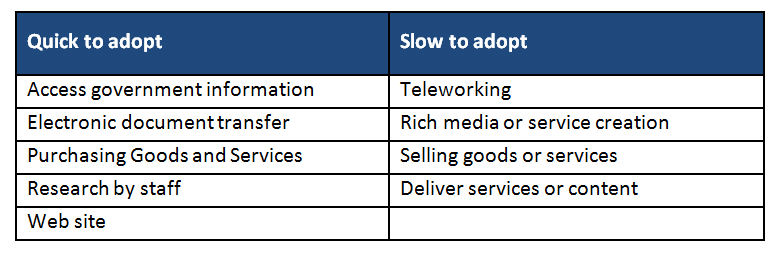It’s Fibre, Not Fiber at the European FTTH
Why Video is Not a Killer App
More than 3,300 interested in broadband flocked to Munich earlier this month to review the latest trends and best practices in our industry. We were thrilled to be able to participate and share our insights on broadband, its meaningful use, and how to maximize its benefits.
Chris Holden, the organization’s president, set a tone for the conference that aligned with SNG’s own mantra – the importance of meaningful use. Holden explained that the biggest challenge facing the FTTH (fiber) market is adoption and use… driving meaningful use. Holden explained that there seems to be an understanding gap when getting  people to switch.
people to switch.
The current hope is that video becomes the killer app that will drive more people to make the switch to fiber and therefore reap the untold benefits of faster Internet. Maybe. I may be a little less optimistic than the rest that video is a silver bullet. As a broadband evangelist, I realize the message must change to get the masses to “convert.” How does video matter to businesses operations and competitiveness? The fact is that there are lots of audiences for whom video does not currently matter. The real question is how can you make it relevant to them and personalize the context? For example, for health care providers and their patients, broadband video would become relevant with the availability of telemedicine.
There are no shortcuts, no killer apps, or silver bullets. It’s still Marketing 101 – tangible benefits are the only thing that moves move the needle.
Beyond the Killer App
There’s No Holy Grail, But There’s Utilization
by Michael Curri
Only through driving an understanding of the benefits of multiple e-solutions (enabled by broadband) can a community can truly create a platform for innovation. To clarify, when I talk about broadband I mean high-speed, reliable and affordable access to the Internet so that a business, organization or household can effectively participate in the digital economy.
Some people have the experience, or can figure out what fiber can mean for them – but many do not. They need to be shown and have the value of FTTH (fiber) be personalized to the needs of their business, organization, or household – it’s not self-evident to most people how, for example, to transform their operations and deliver their services or content online. And of course, many e-solutions are more complex and sophisticated in nature, making them slower to be adopted (or understood … or both). This issue needs to be understood and addressed by providers of FTTH.
The table below shows rankings based on adoption rates for organizations with average utilization levels equal to a Digital Economy index (DEi) score of 6. As a reminder, DEi is a proprietary SNG measure where scores range from 1 to 10 (10 being highest). The higher scores reflecting the greater the number, scope and sophistication of the Internet activities deployed in an organization.
e-Solutions Adoption Rates for “Average” Organizations (with DEi of 6)

Those with lower utilization adopt the easier to use applications first while more sophisticated and difficult applications tend to be adopted later, especially by organizations that already have high utilization.
What does it mean to have a high capacity, high quality, reliable and affordable Internet? It depends on who the end-user is (by industry sector), what they’re currently doing (i.e. their business operations), what they want to be doing, and what they should be doing to remain competitive
Until the FTTH vendors figure out how to personalize the value of FTTH to end-users, adoption and meaningful use will continue to be an issue – and they won’t be seeing the uptake by end-users that can justify their investment in FTTH networks.
This is where the business case and the economic case for investing in FTTH needs to be looked at from an economic perspective. SNG presented on impacts from broadband and FTTH from SNG findings and I then turned to how that information could be used to drive economic development through broadband. I encourage you to review the material covered at the conference by clicking here.
News from the Field: Kentucky
In Kentucky, the process of outreach is underway. Led by the Office of Broadband Outreach in Frankfort, KY, SNG and their partners have deployed broadband utilization surveys statewide directly to over 120,000 residential and organizations email addresses. As in Illinois the survey is open to the public and available on the host agency websites.
Where in some instances, survey participation is seen in “pockets” of activity, surveys have been received from every corner and county in Kentucky. This is particularly important in the more mountainous Appalachian areas of South and Eastern Kentucky where, historically, broadband capacity and availability has been lacking.
Kentucky sees a high rate of interest from radio and print media which has provided a nice little push encouraging survey completion.
